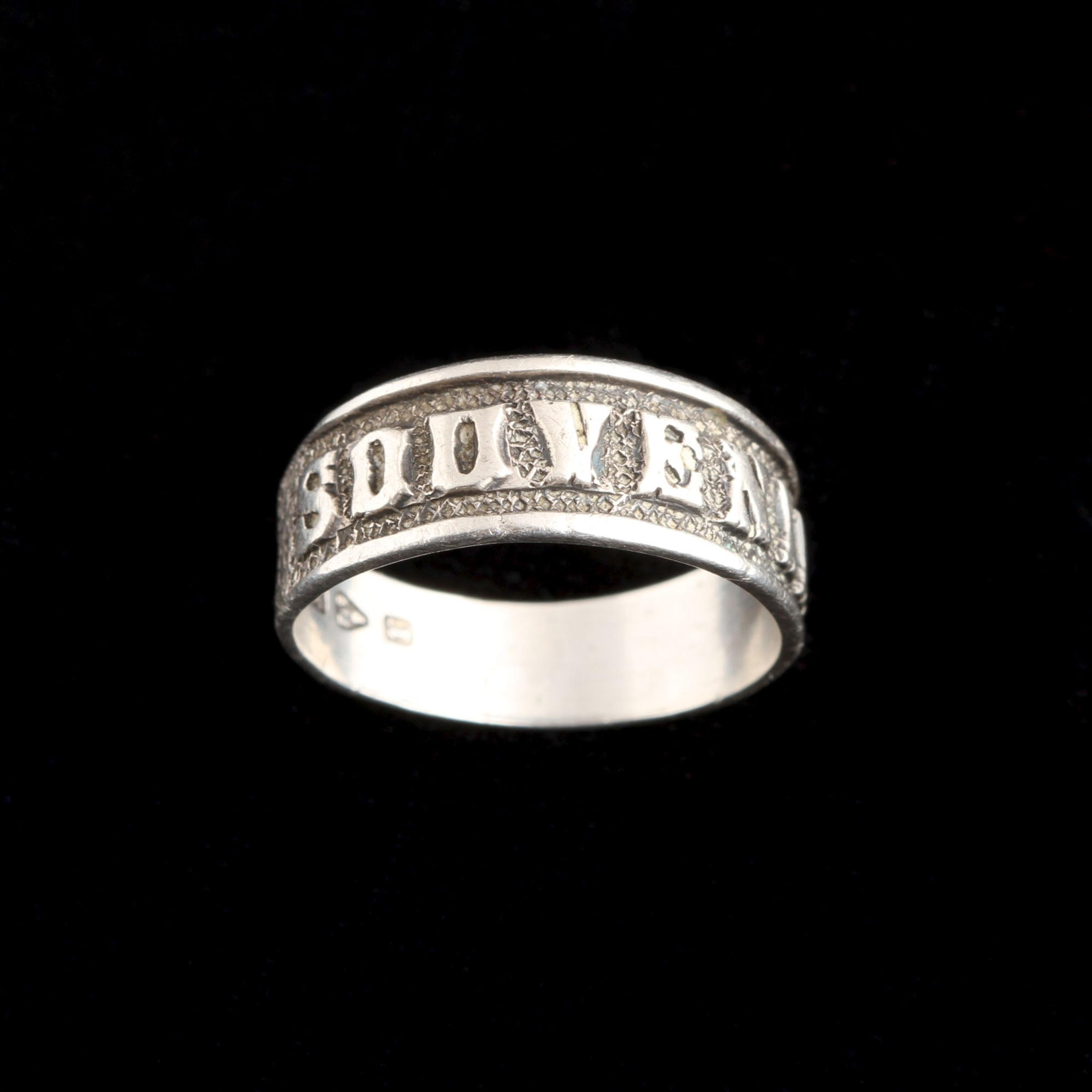Souvenir rings like these were exchanged between friends and lovers as tokens of friendship and esteem. This one, in silver, was mass-produced at the end of the 19th century and marketed as an affordable choice for almost anyone in the UK to give as a gift. There are no hand-engraved details at all. Both the means of production and the materials (silver) were designed to be cheap and quick so they could be sold en masse at low prices. Fast fashion from 1880; the hallmarks also tell us it was made in Chester, an English city specializing in jewelry.
This product is final sale.
thedetails
- Materials
Sterling silver.
- Condition
Very good; light wear commensurate with age.
- Age
c. 1880; hallmarked for Chester.
- Size
Size 7.5; resizable by a local jeweler should you need or want it adjusted. 7.5mm wide at face, 5mm wide at back.
Need more photos?
Send us an email to request photos of this piece on a model.

Aboutthe
VictorianEra
1837 — 1901
The Victorians were avid consumers and novelty-seekers, especially when it came to fashion, and numerous fads came and went throughout the 19th century. In jewelry, whatever fashion choices Queen V. made reverberated throughout the kingdom. The Romantic period reflected the queen’s legendary love for her husband, Albert.
Jewelry from this period featured joyful designs like flowers, hearts, and birds, all which often had symbolic meaning. The queen’s betrothal ring was made in the shape of a snake, which stood for love, fidelity, and eternity. The exuberant tone shifted after Prince Albert passed away in 1861, marking the beginning of the Grand Period. Black jewelry became de rigeur as the Queen and her subjects entered “mourning,” which at the time represented not just an emotional state, as we conceive of it today, but a specific manner of conduct and dress. She wore the color black for the remainder of her life, and we see lots of black onyx, enamel, jet, and gutta percha in the jewelry from this time. Finally, during the late Victorian period, which transitioned along with a rapidly changing world into the “Aesthetic Movement”, there was a return to organic and whimsical motifs: serpents, crescent moons, animals, and Japonaisserie designed for the more liberated “Gibson Girl”. During the second half of the 19th century, America entered the global jewelry market, with Tiffany and Co. leading the way. Lapidaries continued to perfect their techniques, and the old European cut emerged toward the end of the Victorian period. The discovery of rich diamond mines in South Africa made the colorless stones more accessible than ever before.
please note:Terms of Sale
During the archive sale, shipping is FREE for purchases over $300 within the continental US. For US-bound purchases under $300, a flat $10 fee will be charged to cover packaging and shipping costs. International orders will be subject to our normal shipping fees, and may incur customs charges. Please refer to our FAQ's for more information on our international shipping policy.
For sale orders, we'll be shipping via USPS first class mail. Any orders valued over $1,000 will ship via UPS ground, insured and with signature required. Since these sales are always extremely popular, expect to wait up to 4 weeks for shipping and handling; for any orders involving sizing or stamping, expect to wait up to 4-6 weeks. We have one employee and expect many hundreds of orders. You'll receive an email when your order ships, which may take several weeks. Please be patient!
To keep things cheap for everyone, we will be using basic, minimal packaging for all archive sale orders. We are unable to provide gift wrapping or notes for any sale orders—sorry!
If you place multiple orders, email us with both your order numbers. We’ll refund you the second shipping fee and will combine all items into one package.
All sale items are FINAL SALE. No refunds or exchanges.


